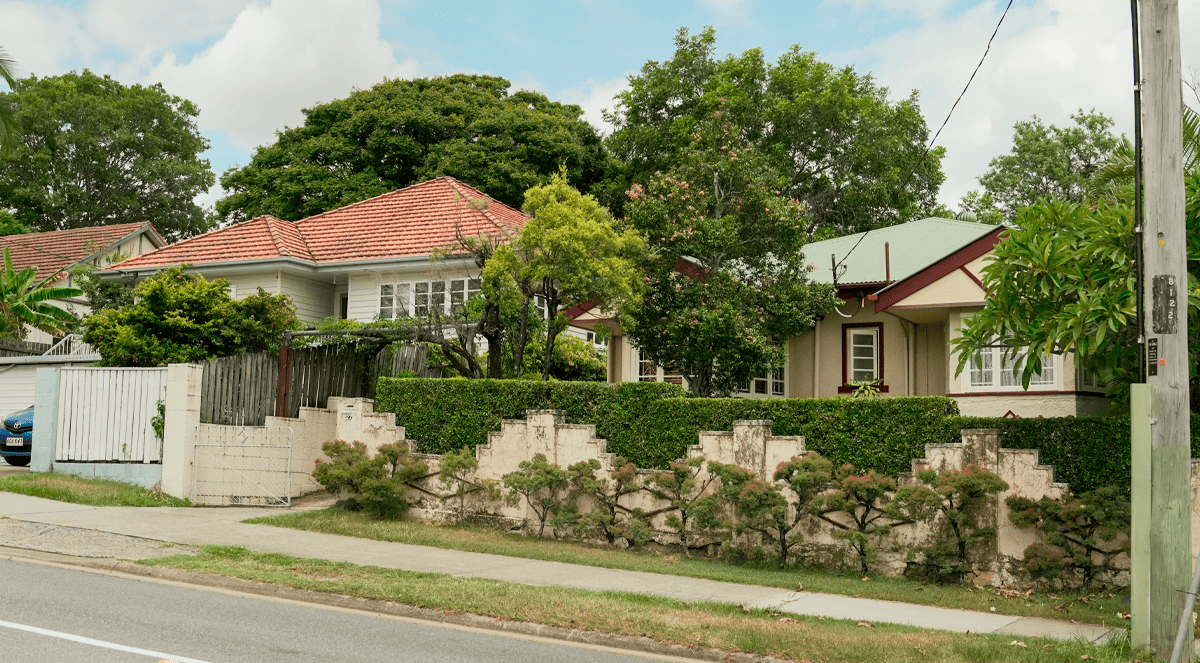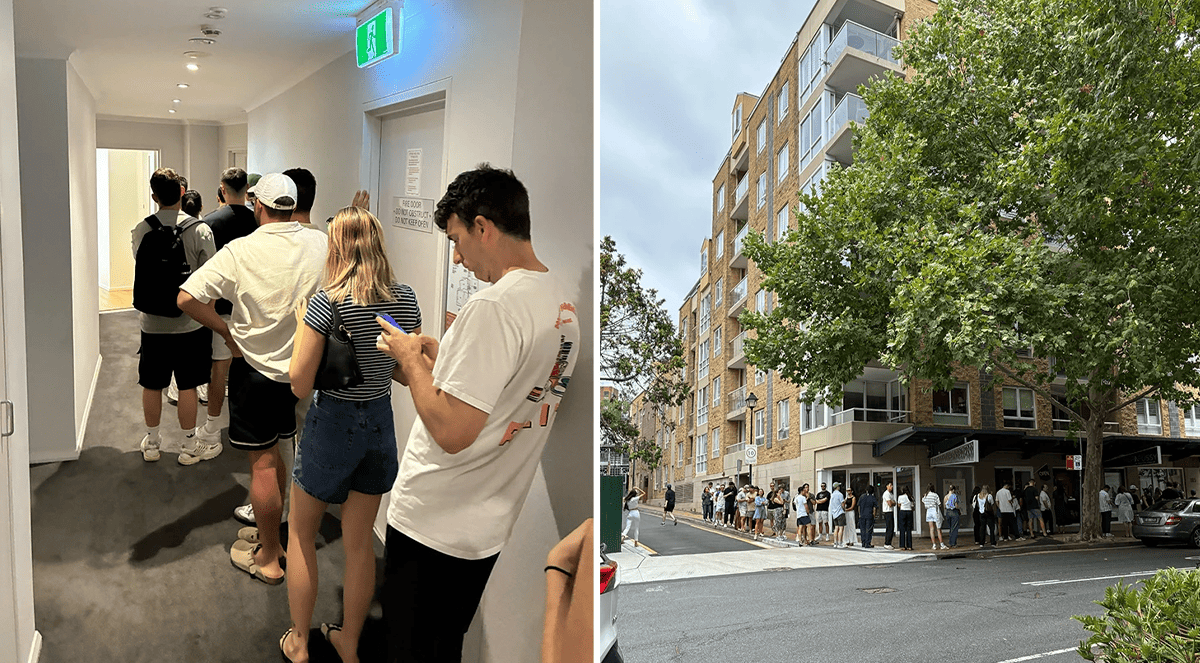Features > Property Education > Investment Tips
The single most important element in Property Investing

There are many factors to consider when investing in property, but there is one variable that will decide how profitable your investment really is, and that is time in the market.
Time in the market refers to the amount of time an investor owns a property, and when it comes to real estate, the longer the better.
Australian real estate typically moves through cycles of growth and decline, with periods of growth generally lasting longer and stronger than the declines.
This is where the importance of time held really lies. The overarching trend of property prices over the long term has been undeniably upward. But there have been short periods of decline that can put a damper on profits if an investor opts to hold for small periods of time.
CoreLogic released data in August last year, showing the movement of house values over the last thirty years.
The data shows that declines correlated with changes in monetary policy (like the recent cash rate hikes), credit availability (APRA’s tightening of serviceability buffers), and economic shocks.
The bigger picture shows that Australia’s dwelling values have increased 382 percent over the past three decades, which equates to a yearly average growth rate of 5.4 percent.
Out of the three decades that were analysed, the most recent decade was the most profitable for home values, which rose 72 percent over the 10 years from 2012 to 2022.

Source: CoreLogic
Time in the market is more important than timing the market
Tim Lawless, CoreLogic’s research director, says the data proves that the old adage is true.
“Overall, the long-term trends highlight the cyclical nature of housing markets. Changes in housing values over decades are a clear reminder that time in the market is more important than timing the market,” said Mr Lawless.
In Australia, the average home is owned for 9.9 years, according to CoreLogic’s Pain and Gain report for the final quarter of last year.
And the difference in profits for those who held their properties for 30 years compared to just 5 years was huge.
Those who held their properties for 30 years saw a median nominal return of $700,000. And those who held properties for just five years came away with $195,000 in profit.
These figures are from the March quarter, when the market had bottomed out after the recent downturn, so averages are slightly lower than recent peaks.
But what is glaringly obvious is the importance of property as a long game.
Although, rather than just ‘setting and forgetting’, the beauty of compounding growth means that investors can expand their investment portfolio, by tapping into equity to purchase additional investment properties. This is called leverage.
Other important variables to consider
While it may sound relatively simple to create wealth from property, there are other important variables that come into play, in addition to time in the market.
Making sure the investment property is an A grade property will determine how much capital growth it attracts, how resilient it proves to be in periods of downturn, and how well it performs in the long run.
Identifying an A grade property is the challenge, and getting professional advice will help an investor weed out the bad properties from the properties well positioned for growth.
The difference between an outperforming property and an underperforming or average property can be huge in the long run.
A $600,000 property growing at 7 percent would appreciate to be worth $1.18 million in 10 years time.
But a $600,000 property achieving only 5 percent annual growth would be worth $977,337 by year 10. It’s still an impressive return on investment, but a shortfall of more than $200,000 nonetheless.
Additionally, the investment strategy matters too.
Using a positive gearing strategy will optimise cash flow, and lend itself to favourable credit availability, making it easier to tap into equity and multiply your properties. But a negative gearing strategy could hamper cash flow, placing a ceiling over your borrowing capacity.
There are many moving parts when it comes to a successful investment strategy, so professional advice is worth its weight in gold. But one thing prevails – time in the market is crucial to profitability. Property is a long game.
This article is general in nature. Readers should always seek their own professional advice that takes into account their own personal circumstances before making any financial decisions.
Stay Up to Date
with the Latest Australian Property News, Insights & Education.




.png?width=292&height=292&name=Copy%20Link%20(1).png)
 SIGN UP FOR FREE NEWSLETTER
SIGN UP FOR FREE NEWSLETTER

.png)






.jpg?width=1920&height=1080&name=Warning%2c%20You%20Might%20Be%20Facing%20Higher%20Taxes%20Soon%20(1).jpg)





.png?width=1920&height=1080&name=Rate%20Drops%20Signal%20BIGGEST%20Property%20Boom%20in%20DECADES%20(1).png)

.jpg?width=1920&height=1080&name=Labor%20vs%20Liberal%20These%20Housing%20Policies%20Could%20Change%20the%20Property%20Market%20Forever%20(1).jpg)
.jpg?width=1920&height=1080&name=QLD%20Slashes%20Stamp%20Duty%20Big%20News%20for%20Investors%20%26%20Home%20Buyers%20(1).jpg)
.jpg?width=1920&height=1080&name=Trump%20Just%20Slapped%20Tariffs%20%E2%80%93%20Here%E2%80%99s%20What%20It%20Means%20for%20Australia%20(1).jpg)
.jpg?width=1920&height=1080&name=Federal%20Budget%202025%20More%20Debt%2c%20No%20Housing%20%E2%80%93%20Here%E2%80%99s%20What%20You%20Need%20to%20Know%20(1).jpg)
.jpg?width=1920&height=1080&name=Australias%20Housing%20Crisis%20is%20about%20to%20get%20MUCH%20Worse%20(New%20Data%20Warns).jpg)
%20(1).jpg?width=1920&height=1080&name=Australias%20RENTAL%20CRISIS%20Hits%20ROCK%20BOTTOM!%20(2025%20Update)%20(1).jpg)
%20(1).png?width=1920&height=1080&name=Is%20Adelaide%20Still%20a%20Good%20Property%20Investment%20(2025%20UPDATE)%20(1).png)
.jpg?width=1920&height=1080&name=RBA%20Shocks%20with%20Rate%20Cuts!%20What%E2%80%99s%20Next%20for%20Property%20Investors%20(1).jpg)
%20(1).jpg?width=1920&height=1080&name=I%20Predict%20The%20Feb%20Rate%20Cut%20(My%20Price%20Growth%20Prediction)%20(1).jpg)
.png?width=1920&height=1080&name=Why%20Property%20Prices%20Will%20Rise%20in%202025%20Market%20Predictions%20(1).png)
.jpg?width=1920&height=1080&name=Why%20Investors%20Are%20Choosing%20Apartments%20Over%20Houses%202%20(1).jpg)
.jpg?width=1920&height=1080&name=Why%20Rate%20Cuts%20Will%20Trigger%20A%20Property%20Boom%20(1).jpg)
.jpg?width=1920&height=1080&name=Retire%20On%202Million%20With%20One%20Property%20(Using%20SMSF).jpg)
.jpg?width=1920&height=1080&name=4%20Reasons%20Why%20You%20Should%20Invest%20in%20Melbourne%20Now%20(1).jpg)
%20(1).jpg?width=1920&height=1080&name=Old%20Property%20vs%20New%20Property%20(Facts%20and%20Figures%20Revealed)%20(1).jpg)
%20(1).jpg?width=1920&height=1080&name=Will%20The%20New%20QLD%20Govt%20Create%20a%20Property%20Boom%20or%20Bust%20(My%20Prediction)%20(1).jpg)
%20Scott%20Kuru%20(1).jpg?width=1920&height=1080&name=Inflation%20Hits%20Three-Year%20Low%20(Will%20RBA%20Cut%20Rates%20Soon)%20Scott%20Kuru%20(1).jpg)
.jpg?width=1920&height=1080&name=How%20to%20Buy%20Investment%20Property%20Through%20SMSF_%20The%20Ultimate%20Guide%20(1).jpg)
.jpg?width=1920&height=1080&name=Victoria%20Slashes%20Stamp%20Duty%20Melbourne%20Set%20to%20Boom%20Scott%20Kuru%20(1).jpg)
.png?width=1571&height=861&name=Are%20Foreign%20Buyers%20Really%20Driving%20Up%20Australian%20Property%20Prices%20(1).png)
.jpg?width=1920&height=1080&name=The%20Single%20Factor%20That%20Predicts%20Property%20Growth%20Regions%20(1).jpg)
%20Scott%20Kuru%20(1).jpg?width=1920&height=1080&name=My%20Prediction%20On%20Rates%20%26%20Negative%20Gearing%20(Market%20Crash)%20Scott%20Kuru%20(1).jpg)

-1.png?width=1920&height=1080&name=Major%20Banks%20Cut%20Rates%20Will%20RBA%20Follow%20Suit%20(Sept%20Rate%20Update)-1.png)
%20Scott%20Kuru-1.png?width=1920&height=1080&name=Rate%20Cut%20Coming%20What%20New%20Zealands%20Move%20Means%20for%20Australia%20(Sept%20Prediction)%20Scott%20Kuru-1.png)
%20(1).jpg?width=1920&height=1080&name=Buy%20when%20the%20interest%20rates%20are%20high!%20(Why%20you%20must%20buy%20now!)%20(1).jpg)
.jpg?width=1920&height=1080&name=Carms_Revised%20Taxes%20Due%20Aug%209%20YT%20Thumbnail02%20(1).jpg)
.jpg?width=1920&height=1080&name=Carms_Too%20Little%20Too%20Late%20Aug%207%20YT%20Thumbnail01%20(1).jpg)









.jpg?width=1920&height=1080&name=Carms_Rate%20Drop%20In%20July%20Jun%2010%20YT%20Thumbnail02%20(1).jpg)
.jpg?width=1920&height=1080&name=Carms_Own%20a%20Property%20V6%20Jun%205_YT%20Thumbnail%20(1).jpg)









.png?width=1920&height=1080&name=Artboard%201%20(3).png)






.jpg?width=1920&height=1080&name=YT%20thumbnail%20%20(1).jpg)

